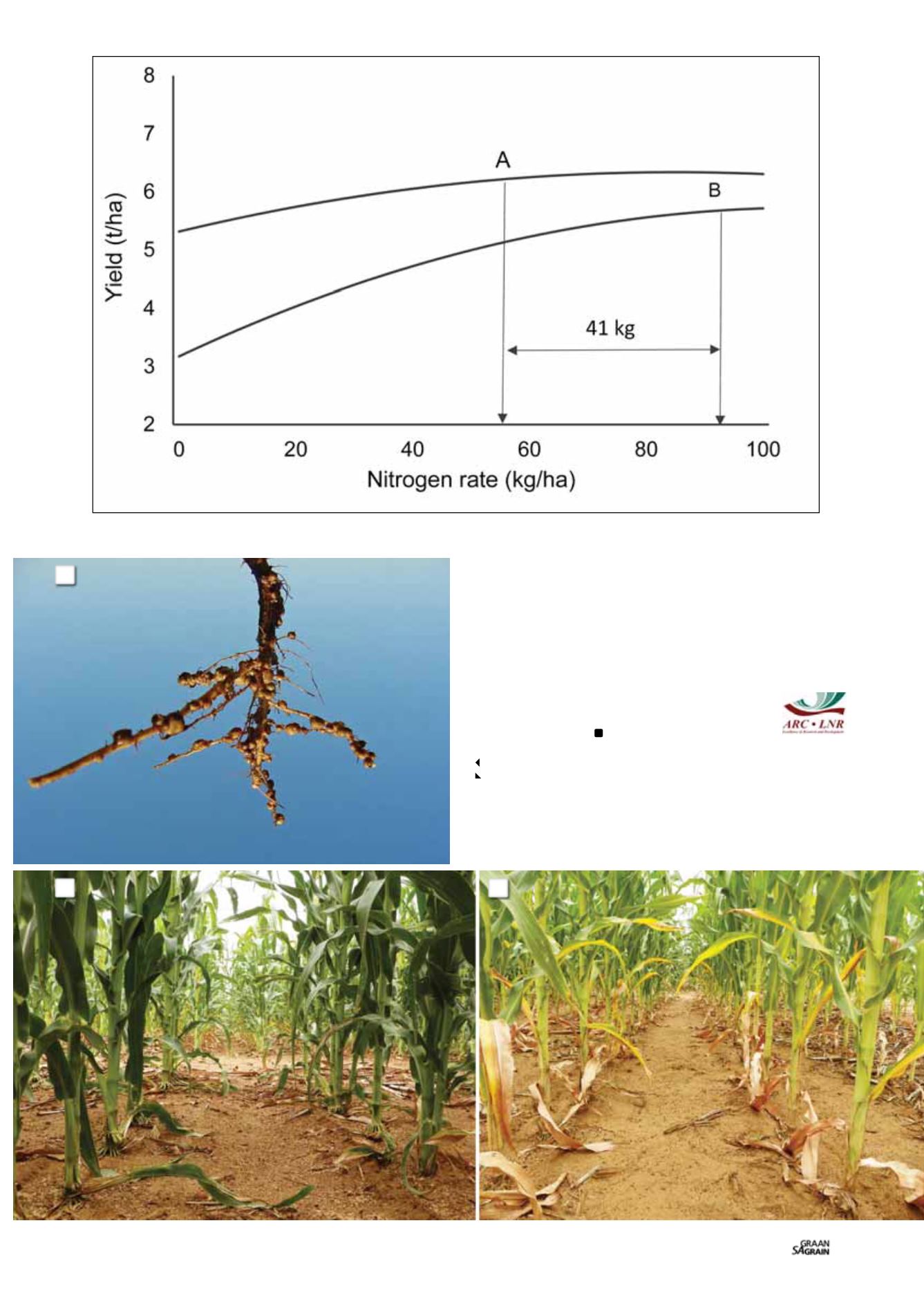

91
With the limited information currently available, it seems relatively
safe to reduce the nitrogen fertilisation rate of monoculture maize
on sandy soil, with 20 kg/ha - 30 kg/ha for maize following a soy-
bean crop.
Maize can thus benefit in two ways from the preceding soybean
crop. Firstly by the yield enhancement which is often present and
secondly from the saving on nitrogen fertiliser. To take advantage
of these benefits, soybean should be followed by
a non-leguminous crop such as maize rather than
other dicotyledonous crops with which it have several
diseases in common.
1: Roots from a soybean plant with
Rhizobium
nodules.
2a and 2b: Typical lower leave yellowing indicating nitrogen deficiency
in monoculture maize while these symptoms are absent in soybean
rotated maize.
Graph 1: The yield response curves of soybean rotated and monoculture maize with point A and point B indicating their respective optimum
nitrogen application rates.
1
2a
2b

















